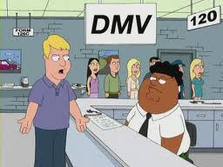 Ignition interlock devices, or IID’s, were found to prevent repeat DUI offenders, according to the Centers for Disease Control and Prevention. “Re-arrest rates for alcohol-impaired driving decreased by a median of 67 percent relative to drivers with suspended licenses.”
Ignition interlock devices, or IID’s, were found to prevent repeat DUI offenders, according to the Centers for Disease Control and Prevention. “Re-arrest rates for alcohol-impaired driving decreased by a median of 67 percent relative to drivers with suspended licenses.”
IID’s are devices that can be installed in vehicles to prevent someone from operating a vehicle with a blood alcohol concentration (BAC) above a specified level. The driver blows into the machine, a breath sample is taken, and if the BAC is above the stated level, the car will not operate.
Currently, California courts may require a person convicted of a first DUI to install an ignition interlock device on any vehicle the person owns or operates, pursuant to Vehicle Code Section 23575. This penalty is more likely if the driver’s blood alcohol concentration was .15 percent or higher, if the offender had two or more prior moving violations, or if a chemical test was refused.
California is also conducting a pilot program under Vehicle Code Section 23700, which became effective July 1, 2010, in the Counties of Alameda, Los Angeles, Sacramento, and Tulare only. Upon conviction of any drunk driving offense in those counties, the offender is required by the Department of Motor Vehicles, DMV, to have a certified ignition interlock device installed.
With this recent CDC study showing the effectiveness of the IID programs, you can expect the California pilot program will be expanded in the future to all California counties with the hopes of preventing repeat DUI’s.
Online Sources:
CDC Says Ignition Interlocks Work In Reducing Drunk Driving: stlamerican.com
Ignition Interlocks Reduce Alcohol-Impaired Driving: cdc.gov
 San Diego DUI Lawyers Blog
San Diego DUI Lawyers Blog






 Former MADD President, Debra Oberlin, 48, was arrested and charged with driving under the influence in Gainesville, Florida, on February 18th, according to
Former MADD President, Debra Oberlin, 48, was arrested and charged with driving under the influence in Gainesville, Florida, on February 18th, according to 
 You are pulled over by a police officer suspected of driving under the influence. You take a breath or blood test. The result — .12 (or even higher). You are over the legal limit of .08% blood alcohol content (BAC) and you are arrested and charged with
You are pulled over by a police officer suspected of driving under the influence. You take a breath or blood test. The result — .12 (or even higher). You are over the legal limit of .08% blood alcohol content (BAC) and you are arrested and charged with 
 San Diego DUI patrols resulted in 160 driving under the influence arrests during the Super Bowl weekend, according to the
San Diego DUI patrols resulted in 160 driving under the influence arrests during the Super Bowl weekend, according to the